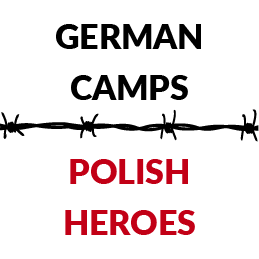
Photo by Memorial and Museum Auschwitz-Birkenau
I have also been asked how we, the Polish staff of the Auschwitz Memorial and State Museum, can handle the fact that our grandparents perpetrated these atrocities. This only shows how much work needs to be done.
In conversation with Andrzej Kacorzyk, Head of the International Centre for Education About Auschwitz and the Holocaust
Do foreign visitors to the Auschwitz Memorial and State Museum actually know the history of this place?
The Museum attracts people whose knowledge about the Holocaust, World War II or the German occupation of Poland, varies significantly. Europeans and Israelis are more aware of the history – that’s for sure. The majority of Europeans, especially from the countries afflicted by the tragedy of World War II, know quite a lot about history. The sad thing, however, is that these same Europeans still do not know who was responsible for all this. I have also been asked how we, the Polish staff of the Auschwitz Memorial and State Museum, can handle the fact that our grandparents perpetrated these atrocities. This only shows how much work needs to be done.
How does the Auschwitz Memorial and State Museum educate the visitors to discriminate between the victims and the perpetrators?
It is essential that our guides are prepared thoroughly. They must be both knowledgeable and have a passion for teaching. We go out of our way to provide guides who can both pass on their knowledge of history and answer all the queries or dispel the doubts.
We are also striving to provide stories that are based on facts and are in the mother tongue of the visitors. Our guides speak a total of 18 different languages, so we can reach out to the majority of the visitors in their own language. We are also extremely particular about accuracy. That is why we tend to use the original German terminology. These words demonstrate who the camp personnel were and who should be held responsible for the atrocities. We also point out to our guides that their language cannot be impersonal – they must be precise and keep their message true. And so we would never say that “gas was thrown into a gas chamber” because the sentence provides no information on the perpetrators. We make it clear that particular people – the SS personnel – threw lethal Zyklon B into the chambers.
What other measures do you take to raise the awareness of Auschwitz?
One such way will be to build a new venue for the International Centre for Education About Auschwitz and the Holocaust. We are really keen to create a site that summarises your visit with a stop at a Holocaust memorial. We do not want our visitors to switch from the gas chamber back to simple entertainment. We do not want to provide an experience that is emotional only. We also need a place that encourages discussion and gives our visitors an additional time for reflection, to understand more and for the experience of Auschwitz to sink in.
We go out of our way to increase our visibility in the world and to reinforce our position as educators. The Internet is a very powerful tool in this respect, as it helps us to reach out to our new target audiences. For example, people from South America visit the Auschwitz Memorial and State Museum only rarely, but they do often browse our website.
Why is it that despite all these measures the term “Polish camps” is still in use?
I think that most of the time people are just ignorant. There was a camp in Poland, so a lot of people simplify things and say that the camp was Polish. I think that the stereotypical representations of Polish anti-Semitism have also played a part in this. However, people who fall prey to these stereotypes must realise that Hitler created the Holocaust network in Poland not because we were anti-Semites complicit in the German doings, but because a large Jewish minority lived in Poland. Prior to World War II, the Jews accounted for over 10% of Poland’s entire population.



